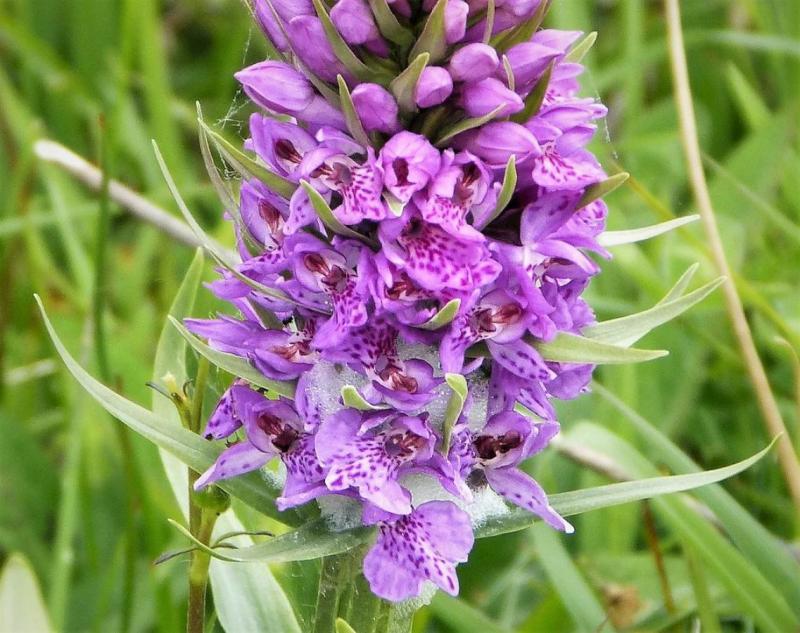Dactylorhiza purpurella
Also known as: The Deep Purple Dactylorhiza or Orchis purpurella var. crassifolia Orchis incarnata f. ampla Orchis latifolia var. brevifolia Orchis incarnata var. obscura Orchis praetermissa var. pulchella Orchis purpurella var. maculosa Orchis purpurella var. pulchella Dactylorhiza purpurella var. cambrensis Dactylorhiza purpurella var. majaliformis Dactylorhiza purpurella ssp. majaliformis Dactylorhiza majalis var. purpurella Dactylorhiza purpurella var. purpurella Dactylorhiza purpurella var. maculosa Dactylorhiza majalis ssp. purpurella Dactylorhiza majalis var. pulchella Dactylorhiza cambrensis Dactylorhiza incarnata var. obscura Dactylorhiza cruenta var. brevifolia Dactylorhiza purpurella var. pulchella Dactylorhiza purpurella var. atrata Dactylorhiza latifolia ssp. cambrensis Dactylorhiza purpurella var. crassifolia Dactylorhiza majalis var. cambrensis Dactylorhiza majalis var. brevifolia Dactylorchis majalis ssp. cambrensis Dactylorhiza comosa ssp. cambrensis Dactylorhiza majalis var. maculosa UK - Northern Marsh Orchid in the subfamily: Orchidoideae
General Information
The Deep Purple Dactylorhiza is a cold growing orchid belonging to the sub family Orchidoideae.
Plant Description
Grows to 10-30cm. Each new growth has numerous lance shaped oblong shaped leaves that grow to 1.5-10cm long. Pseudobulbs grow to 10-30cm
Substrate(s)
- Coarse
- Medium
- Bark
- Charcoal
- Spaghnum Moss
- Perlite
Climate
Grows at low elevations. Rainfall ranges from 36mm to 79mm per day, heaviest in August and lightest in April. Humidity ranges from 79% to 87%, highest in December and lowest in June. Temperature ranges from 3C to 17C, highest in July (12C to 17C) and lowest in February (3C to 7C).
Fertiliser
Apply liquid based fertiliser per recommended directions. They can benefit from a high phosphate fertiliser leading up to flowering season, followed by a high nitrogen fertiliser when new growth appears, and a balanced fertiliser in other times. These orchids can also tolerate slow release fertiliser applied 1-2 pellets per cup (250ml) of media.
Use balanced fertiliser during Spring and Summer. Apply fertiliser regularly at half strength year round. Use a high Nitrogen fertiliser during Spring and Summer. Use a high Phosphorous fertiliser during Summer.Potting
Use water retentive media such as moss to prevent roots from drying out quickly Repotting is best done annually.





















